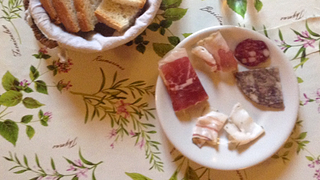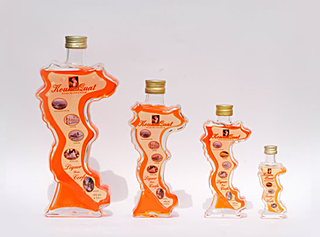24 July 2017
This week’s haul is full of things I obsess about, not because I obsess about them but because they just happened to show up.
First, there’s the whole question of food regulations, which I’ve long maintained are necessary only as a substitute for the trust that comes with knowing who grows your food. Nowhere is this more true than in the organic sector. Once there are rules, there are rule benders, like the “certified organic” egg farm that apparently keeps 3 birds per square foot of floor space, with scant access to the outdoors or any expression of their natural behaviour. And rule breakers, like the companies importing large quantities of organic grain and soybeans that are anything but organic. Sen. Pat Roberts said that “uncertainty and dysfunction have overtaken” organic standards in the US. I’d say that they’ve always been there, baked into those standards.
Then there are fermenting Jews. Sandor Katz was on The Food Programme from the BBC last week, spreading his very sensible gospel. Jonathan Katz shared his own particular version of Fun with Pickles. And a review of a new book, The Joys of Jewish Preserving, from Emily Paster. Meanwhile, I’m discovering that you need more than three plants of Parisian Pickling to get enough cornichons simultaneously to make even a small batch.
To India, and an article by Rahul Goswami on the costs – economic and environmental – of being part of the global economy. Goswami dissects some of the figures on food imports and concludes that “the saving of enormous sums of money can … be had if we but reduce and then cut out entirely the wanton import of food and beverages, and processed and packaged food products”. Self-sufficiency brings its own problems, though, like “high levels of antibiotic-resistance in Indian poultry farming”. And exports of Darjeeling tea are in trouble too.
A new report from Chatham House, a UK think tank, puts India’s problems with globalisation in perspective. Chokepoints and Vulnerabilities in Global Food Trade identifies 14 places through which large amounts of food, feed and feriliser pass. A blockage in any one of them, the report warns, “could conceivably lead to supply shortfalls and price spikes, with systemic consequences that could reach beyond food markets”. It also offers advice on how to avoid such blockages.
And, a couple of bits and bobs from some previous guests on the show.

 In the town hall of Siena is a series of glorious frescoes that depict The Allegory of Good and Bad Government. In one of them is a pig, long snouted and thin legged, black with a white band around its back and down its front legs, being quietly chivied along by a swineherd. It is absolutely recognisable as a cinta senese, a Belted Sienese pig, today one the most favoured heritage breeds in Italy. But it wasn’t always so. Numbers dropped precipitously in the 1950s and 1960s, to the point that the herd studbook, recording the ancestry of all the animals, was abandoned. And then began the renaissance.
In the town hall of Siena is a series of glorious frescoes that depict The Allegory of Good and Bad Government. In one of them is a pig, long snouted and thin legged, black with a white band around its back and down its front legs, being quietly chivied along by a swineherd. It is absolutely recognisable as a cinta senese, a Belted Sienese pig, today one the most favoured heritage breeds in Italy. But it wasn’t always so. Numbers dropped precipitously in the 1950s and 1960s, to the point that the herd studbook, recording the ancestry of all the animals, was abandoned. And then began the renaissance.

 The island of Corfu was part of the Venetian republic for hundreds of years. So when I went there on holiday I expected to see some Italian influences, and there were plenty; Venetian lions, eroded by time; elegant buildings; Italian restaurants everywhere; and dishes with Italian-sounding names, like sofrito and pastitsada. Also, a curiously neon version of limoncello, made in this case from kumquats rather than lemons. I was fortunate to have an introduction to Cali Doxiadis, an expert cook who has made her home on Corfu, and over an excellent lunch on her terrace I plied her with questions.
The island of Corfu was part of the Venetian republic for hundreds of years. So when I went there on holiday I expected to see some Italian influences, and there were plenty; Venetian lions, eroded by time; elegant buildings; Italian restaurants everywhere; and dishes with Italian-sounding names, like sofrito and pastitsada. Also, a curiously neon version of limoncello, made in this case from kumquats rather than lemons. I was fortunate to have an introduction to Cali Doxiadis, an expert cook who has made her home on Corfu, and over an excellent lunch on her terrace I plied her with questions.